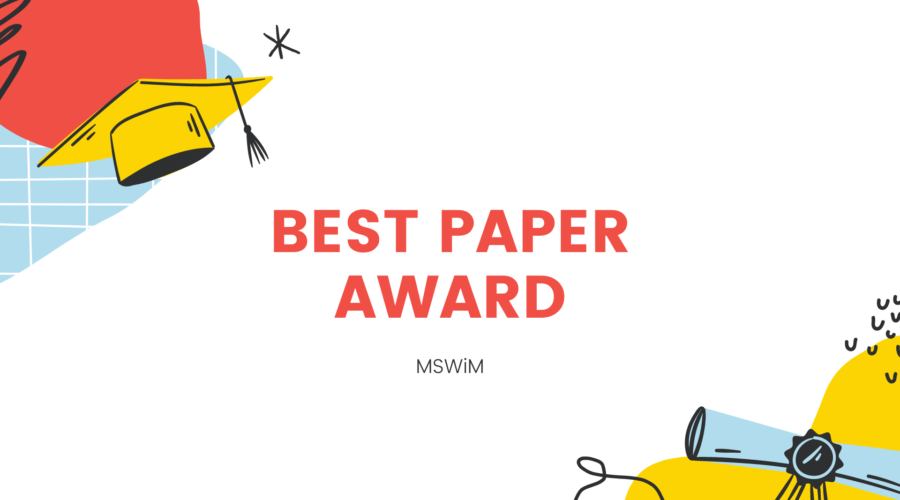IMDEA Networks

Best Paper Award at MSWIM 2020 for a research made at IMDEA Networks
The 23rd International Conference on Modeling, Analysis and Simulation of Wireless and Mobile Systems (MSWiM) has bestowed this prize to Dolores García Martí, Jesús Omar Lacruz, Joan Palacios Beltrán and Joerg Widmer. In an increasingly connected world, the model developed could facilitate the integration of wireless communications in IoT devices
03 December 2020

The article «A Mixture Density Channel Model for Deep Learning-Based Wireless Physical Layer Design», by Dolores García Martí, Jesús Omar Lacruz, Joan Palacios Beltrán and Joerg Widmer, has won the Best Paper Award at 23rd International Conference on Modeling, Analysis and Simulation of Wireless and Mobile Systems (MSWiM). This is a high-quality conference in the field of wireless communications.
Machine learning is a highly promising tool to design the physical layer of wireless communication systems, but it usually requires that a channel model is known. As data rates increase and wireless transceivers become more complex, the wireless channel, hardware imperfections, and their interactions become more difficult to model and compensate explicitly.
New machine learning schemes for the physical layer do not require an explicit model but implicitly learn the end-to-end link including channel characteristics and non-linearities of the system directly from the training data. “A possible application of this research would be correcting the effect of hardware imperfections. As we move to higher frequencies, these hardware imperfections are going to become larger and more complex. This method allows to correct them without having to model them mathematically”, says Dolores García Martí, first author of this paper. She is working as a PhD Student at IMDEA Networks within the Wireless Networking Group headed by Professor Joerg Widmer.
According to his supervisor Joerg Widmer, Research Director at IMDEA Networks and coauthor of this research, “such techniques are extremely promising to facilitate the integration of future high speed wireless technologies in inexpensive consumer and IoT devices.”
When asked about the greatest challenge she has had to face to perform this research, García Martí has no doubt: “I was not familiar with the deep learning methods used and I had the opportunity to develop them during my internship at Cambridge. Our team is focused on proving real application and we tested our results on our 60GHz testbed. It was an amazing team effort!”.
Highlights
The researchers present a novel neural network architecture that provides an explicit stochastic channel model, by learning the parameters of a Gaussian mixture distribution from real channel samples. In that way, they use this channel model in conjunction with an autoencoder for physical layer design to learn a suitable modulation scheme.
Since the system learns an explicit model for the channel, transfer learning can be used to adapt more quickly to changes in the environment. The team applies the model to millimeter wave communications with its challenges of phased arrays with a large number of antennas, high carrier frequencies and wide bandwidth, and complex channel characteristics. However, they have experimentally validated the system using a 60 GHz FPGA-based testbed and show that it is able to reproduce the channel characteristics with good accuracy.
“The new work being done on end-to-end communications allows rethinking the communication blocks and will be part of the solution for the more complex scenarios that we will see in the coming generation of networks. Our work brings more practicality to the previous research as instead of sampling the channel, we get a model that allows extending the model when the channel changes”, concludes García Martí.


Recent Comments